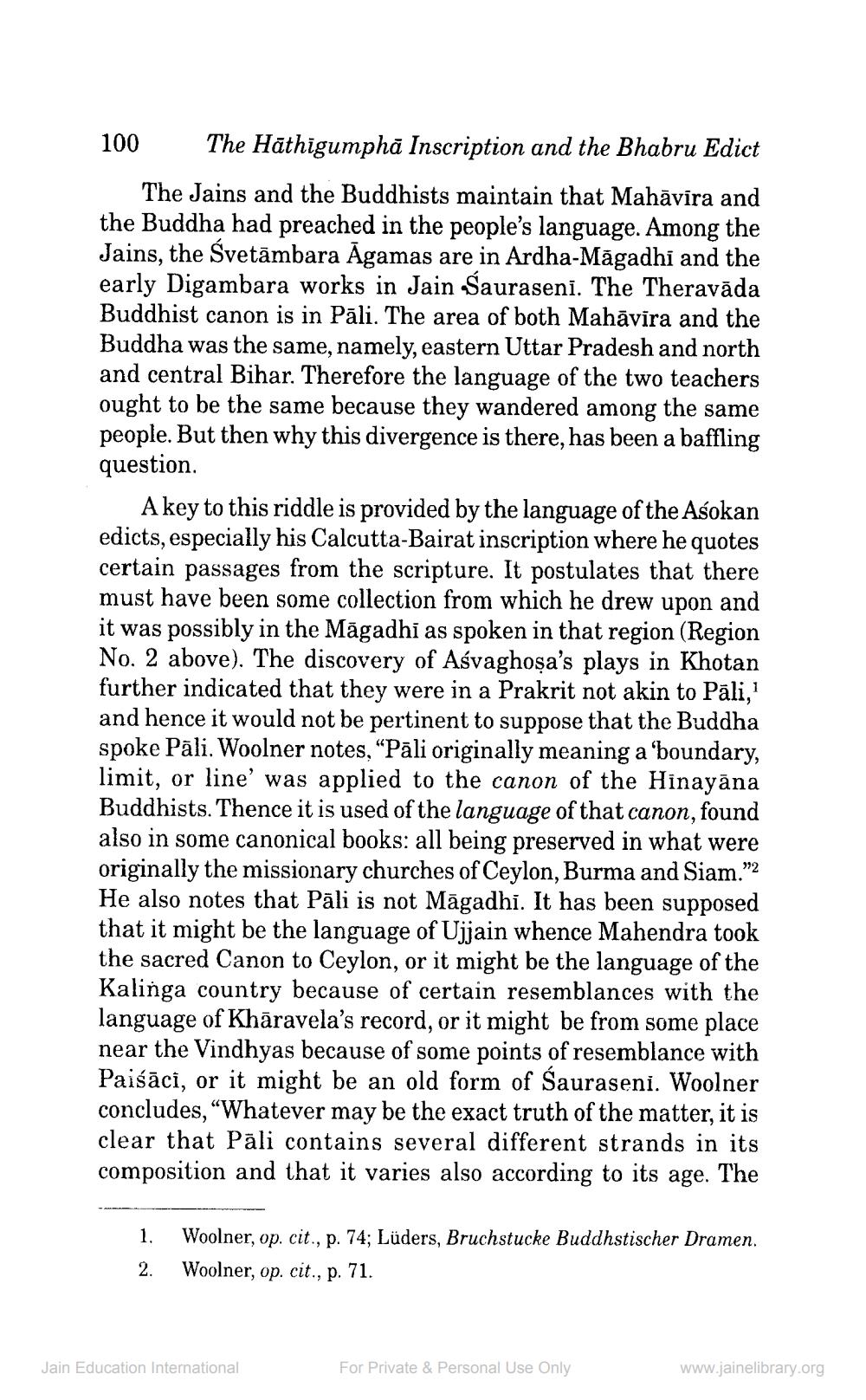________________
The Hathigumpha Inscription and the Bhabru Edict
The Jains and the Buddhists maintain that Mahavira and the Buddha had preached in the people's language. Among the Jains, the Svetambara Āgamas are in Ardha-Magadhi and the early Digambara works in Jain Sauraseni. The Theravada Buddhist canon is in Pāli. The area of both Mahavira and the Buddha was the same, namely, eastern Uttar Pradesh and north and central Bihar. Therefore the language of the two teachers ought to be the same because they wandered among the same people. But then why this divergence is there, has been a baffling question.
100
A key to this riddle is provided by the language of the Aśokan edicts, especially his Calcutta-Bairat inscription where he quotes certain passages from the scripture. It postulates that there must have been some collection from which he drew upon and it was possibly in the Magadhi as spoken in that region (Region No. 2 above). The discovery of Asvaghosa's plays in Khotan further indicated that they were in a Prakrit not akin to Pāli,1 and hence it would not be pertinent to suppose that the Buddha spoke Pāli. Woolner notes, "Pāli originally meaning a 'boundary, limit, or line' was applied to the canon of the Hinayana Buddhists. Thence it is used of the language of that canon, found also in some canonical books: all being preserved in what were originally the missionary churches of Ceylon, Burma and Siam." He also notes that Pali is not Magadhi. It has been supposed that it might be the language of Ujjain whence Mahendra took the sacred Canon to Ceylon, or it might be the language of the Kalinga country because of certain resemblances with the language of Khāravela's record, or it might be from some place near the Vindhyas because of some points of resemblance with Paiśācī, or it might be an old form of Śauraseni. Woolner concludes, "Whatever may be the exact truth of the matter, it is clear that Pali contains several different strands in its composition and that it varies also according to its age. The
1. Woolner, op. cit., p. 74; Lüders, Bruchstucke Buddhstischer Dramen. 2. Woolner, op. cit., p. 71.
Jain Education International
For Private & Personal Use Only
www.jainelibrary.org




